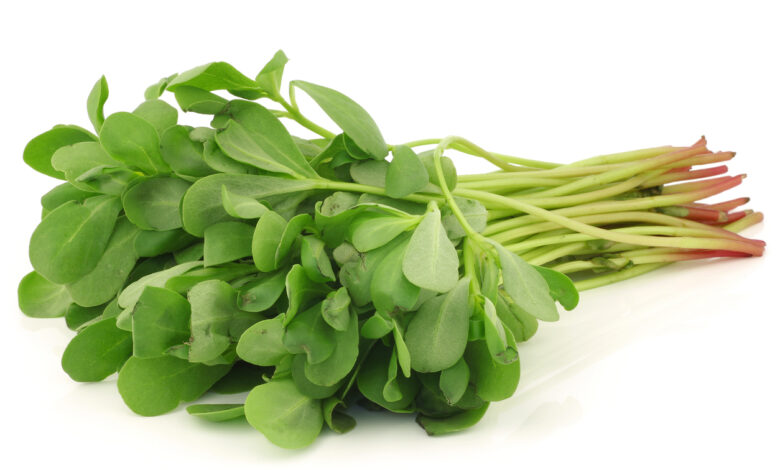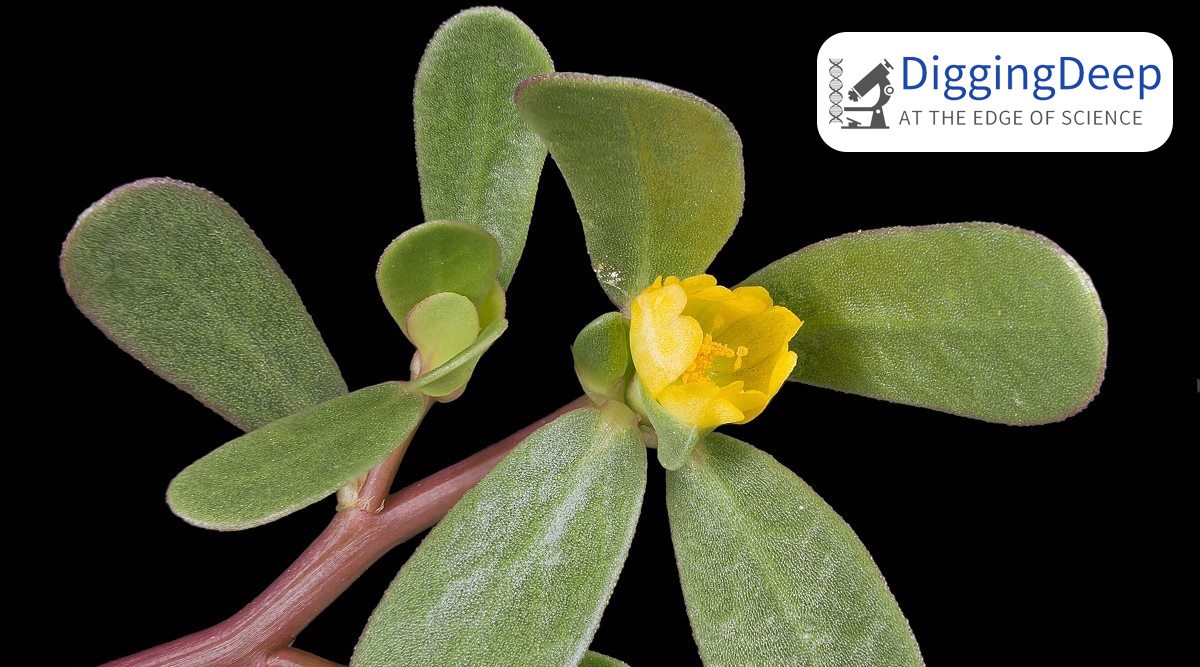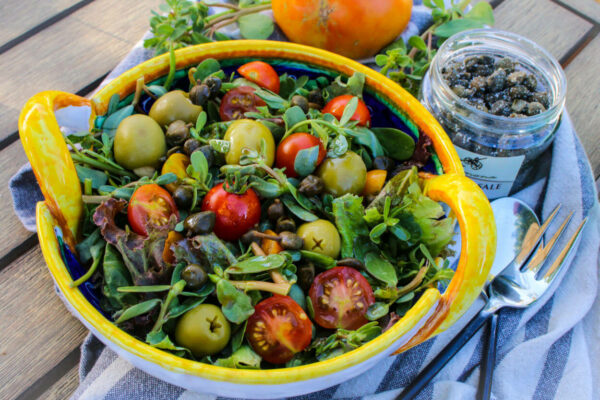
Being a plant lover, I have a knack for buying several plants and maintain my little garden. One morning while watering the plants, I noticed a small plant that grew on my rain lily bed. At first, I thought of uprooting it from the lily bed but then I noticed a bright yellow flower that belonged to it. The yellow flower, purslane attracted me to such an extent that I decided to plant that weed on a separate pot and kept watering it every day. The stems and leaves of this specific plant were fleshy that made it more fascinating.
Weeks of watering and ample sunlight made the tiny plant grow into a healthy plant and the best part was the bright yellow flowers. One evening, my mother while in her daily morning strolling in the garden, pointed out to me that this plant was extremely nutritious for health and highly beneficial to society. Well, just any other time I paid no heed to her and thought she might have confused this ‘weed’ with some other plant she read on the internet. Though she kept insisting on making a salad out of the ‘weed’, I kept discouraging her until she gave up.
After several months, while surfing the internet, I found out that my mother as always was correct. The ‘weed’ that I’ve been growing casually, certainly is beneficial and it’s not just ‘some weed’ but purslane that has attracted scientists around the world to conduct their research on.
Purslane

As the world is witnessing drastic climate changes, ensuring food security has become a major concern for the expanding population. In recent times, the focus has shifted towards growing plants that are drought resilient and use less water for their growth. Many among them are ‘orphan’ crops. Orphan crops are those that are indigenously and historically crucial but have not received the importance they deserved because of globalization that has brought dietary homogenization. Examples of such crops include finger millet, sorghum, pearl millet and tubers like sweet potatoes and elephant yams.
A forthcoming, thorough study in Frontiers in Sustainable Food Systems from the Department of Plant Science, Central University of Kerala, aims the spotlight on purslane (Portulaca oleracea). It’s a crop that has been historically consumed by much of the Ancient World (Europe, Africa, and Asia). Lately, the crop has been neglected and dismissed as inessential. The crop has earned nicknames such as ‘duck weed’ and ‘fat weed.’ Authors of the study and other scientists before them have constantly believed that purslane could be an important ‘climate smart’ crop in a rapidly drying environment.
Magic properties of purslane
It is a C4 plant which means that the plant has the capability of fixing atmospheric CO2 as a 4-carbon molecule. There is another photosynthetic process, known as C3. These plants are capable of fixing atmospheric CO2 as a 3-carbon molecule. C3 and C4 plants have different characteristics. C3 plants (wheat, barley and oats) grow at higher latitudes with ample rainfall. Whereas, C4 plants (millets, sugarcane and maize) grow in low latitudes with a warmer climate.

Purslane has a special property. It can switch to special photosynthesis called Crassulacean acid metabolism (CAM) photosynthesis depending on environmental conditions like day length, salinity, and night temperature and water shortage. This type of photosynthesis is a way of adapting to arid conditions, whereby the plant fixes atmospheric CO2 during the night and perform photosynthesis during daylight. Xerophytic plants like cactus and acacia have this type of photosynthetic pathway. Purslane is unique in its ability to switch from C4 to CAM. Not many of the plants are capable of doing such a switch. It adopts a normal C4 pathway under normal irrigation conditions and changes it to a CAM pathway whenever it senses aridity.
Salt tolerance
The plant also reveals natural durability to salinity. Experts and scientists argue that it could be a significant biosaline crop. Duckweed possesses a gene called the pyrroline-5-carboxylate synthetase (PC5S), this gene is responsible for reacting according to salinity stress by increasing its expression.
Researches and studies have proved that duckweed- similar to other biosaline crops- copes to maintain its photosynthetic activity, even though it hurts its growth potential. However, scientists have found out that while stress harms the growth potential, it has no impact on the production of an excessive number of seeds.
Purslane reveals a comprehensive range of phenotypic flexibility. It means that the plant can adapt easily to any type of change in the environment.
The study has further elaborated on various subspecies or cultivars of purslane which exhibit their characteristics.
- Cultivars originating in Turkey contains the least amount of antinutrients
- Cultivars from Egypt and Eritrea (East Africa) exhibits the maximum drought-resistant characteristics
- Cultivars from Iran possess the maximum biomass yield
- Dutch cultivars have extremely high levels of omega-3-fatty acids
- Greek cultivars contain a high volume of crude protein
Stress tolerance
 Several researchers have argued that recognizing the genetic pathways that help these plants to adapt to stressful situations can be utilized in genetic engineering projects to develop even better verities.
Several researchers have argued that recognizing the genetic pathways that help these plants to adapt to stressful situations can be utilized in genetic engineering projects to develop even better verities.
Along with its excellent capability to resist stress, purslane is known for its high nutritive photo chemicals such flavonoids, lignans, betalains, vitamins, alkaloids, catecholamines, carotenoids and terpenoids. Purslane has high biomass but surprisingly it takes up very little space to grow. It is a low maintenance plant but extremely nutritious especially for vegetarians as their diet mainly lacks omega-3-fatty acids (mostly found in fish oil). Purslane must be promoted not only among vegetarians and vegans but also among non-vegetarians.
Mr Ajay Kumar, the author of the study also mentions that as the consumption of mainstream globalized food is increasing day by day, it is crucial to promote orphan crops like purslane, millets et cetera. These crops have high local and regional significance and are available effortlessly. The pandemic has pushed the world towards situations that we never experienced, like food shortages due to disruption in cross-border transportation. Crops like these can provide relief during such times and especially during civil wars.
Edited by Tanish Sachdev




